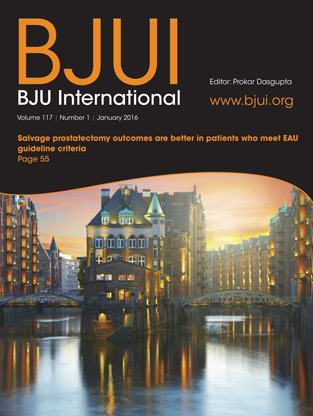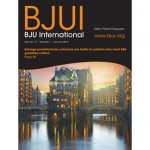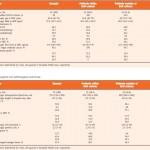Editorial: SRP – a few good men
The current management of recurrent disease after definitive treatment of a localized prostate cancer with radiation therapy (RT) or cryotherapy remains debatable. A substantial portion of patients treated with RT (20–50%) will experience biochemical recurrence. Androgen deprivation therapy has been the mainstay of therapy for this patient population, especially if there was concern about metastatic spread. As the initial experience with salvage radical prostatectomy (SRP) was highly morbid with poor functional outcomes, this did not gain strong acceptance as a recommended treatment method; however, with improved functional outcomes and fewer complications reported in recent series, SRP has once again become a viable alternative in select cases.
The rarity of the procedure makes it difficult to generate large-volume prospective studies on SRP, requiring us to depend on retrospective series. Chade et al. [1] published the largest series of patients undergoing SRP through a multicentre collaborative effort, and were able to identify 404 patients treated between 1985 and 2009; other large series were limited to 50–200 patients. In their systematic review of studies published between 1980 and 2011, Chade et al. [2] reported 5- and 10-year biochemical recurrence-free survival rates of 47–82% and 28–53%, respectively. This broad range of outcomes hints at the variable response of patients to SRP. Identifying the subset of patients who are most likely to benefit from SRP will therefore help tailor therapies for patients who have failed RT, cryotherapy or high-intensity focused ultrasonography.
As described by Mandel et al. [3], there are three sets of guidelines currently addressing patient selection for SRP. The NICE guidelines are the least specific, essentially mentioning SRP as an option for management without specifying specific criteria [4]. The European Association of Urology (EAU) and National Comprehensive Cancer Network guidelines are more specific, and help narrow the patient population to men with clinically localized recurrence (cT1–2), life expectancy of at least 10 years and a preoperative PSA level <10 ng/mL[5, 6]. The EAU guidelines are even more restrictive, limiting selection to men with Gleason ≤7 on prostate biopsy, although they do not specify whether that is before or after RT [5].
In their retrospective analysis of 55 patients treated with SRP between 2007 and 2012, Mandel et al. [3] compare the oncological outcomes of patients treated according to the EAU criteria (n = 32) and those treated without meeting the EAU criteria (n = 23). The 5-year biochemical recurrence-free survival rate was 48.7%, consistent with previous studies, as was the 5-year cancer-specific survival rate of 89%. Importantly, however, after stratification based on EAU criteria, the 5-year biochemical recurrence-free survival rates were drastically different: 73.9% in patients who met the EAU criteria and 11.6% in patients who did not. Patients who did not meet the EAU criteria were more likely to have Gleason score ≥8 (P = 0.08) tumours and pN1 (nodal metastatic) disease at the time of SRP (P = 0.04), which shows the ability of these criteria to select patients with localized disease recurrence. They also established that overall functional outcomes were acceptable after this procedure, with a postoperative urinary continence rate of 74%; none of the patients recovered potency, however, which is not surprising considering the high rate of preoperative erectile dysfunction and the non-nerve-sparing nature of the procedure [3].
In terms of complications, 12.7% of the patients had Clavien ≥ III complications requiring additional intervention. When complications do occur, they can be severe: three of the patients (5.5%) developed rectovesical fistulae and failed conservative management, progressing to fistula repair with omental flap, and two of the patients required permanent urinary diversion. There was no specification, however, regarding which subset of patients experienced these complications. The complication rate was acceptable, and consistent with recent reports of decreased complication rates with SRP [3].
While the study has its limitations as a retrospective review of a relatively small cohort, it is the first to analyse outcomes based on published guidelines criteria, and thereby helps to validate the subset of patients that will benefit from surgical intervention. Based on their findings, appropriately selected patients, those with evidence of truly localized recurrent disease after RT or high-intensity focused ultrasonography, can have significant oncological benefit with acceptable functional outcomes and without significant morbidity. The goal is not to perform SRP indiscriminately, rather to wait for a few good men.



